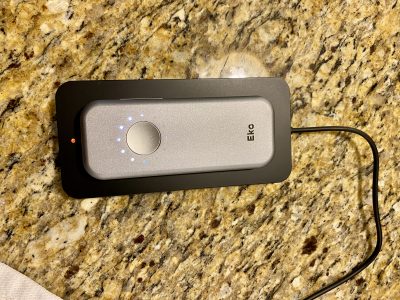More evidence that just computerizing the process doesn’t make it better: Arch Intern Med — Abstract: High Rates of Adverse Drug Events in a Highly Computerized Hospital, May 23, 2005, Nebeker et al. 165 (10): 1111.
Background Numerous studies have shown that specific computerized interventions may reduce medication errors, but few have examined adverse drug events (ADEs) across all stages of the computerized medication process. We describe the frequency and type of inpatient ADEs that occurred following the adoption of multiple computerized medication ordering and administration systems, including computerized physician order entry (CPOE).
Methods Using explicit standardized criteria, pharmacists classified inpatient ADEs from prospective daily reviews of electronic medical records from a random sample of all admissions during a 20-week period at a Veterans Administration hospital. We analyzed ADEs that necessitated a changed treatment plan.
Results Among 937 hospital admissions, 483 clinically significant inpatient ADEs were identified, accounting for 52 ADEs per 100 admissions and an incidence density of 70 ADEs per 1000 patient-days. One quarter of the hospitalizations had at least 1 ADE. Of all ADEs, 9% resulted in serious harm, 22% in additional monitoring and interventions, 32% in interventions alone, and 11% in monitoring alone; 27% should have resulted in additional interventions or monitoring. Medication errors contributed to 27% of these ADEs. Errors associated with ADEs occurred in the following stages: 61% ordering, 25% monitoring, 13% administration, 1% dispensing, and 0% transcription. The medical record reflected recognition of 76% of the ADEs.
Conclusions High rates of ADEs may continue to occur after implementation of CPOE and related computerized medication systems that lack decision support for drug selection, dosing, and monitoring.
Our headlong rush to computerize medical care will do away with transcription errors, but more is needed in terms of process and decision-making.



i’ve had a few anecdotal ADE’s through the computer system as well, good to see a study about it.
I have to say that I really like some aspects of our computerized system.
It’s MUCH easier now to document the variety of medication errors which still occur and the forms can’t get lost.
You can fill the forms out anonymously if you wish. I don’t, but I think it’s a good idea, because people can now report near-misses or errors without pointing at themselves or anyone else.
I wish I could convince all my co-workers that the way to help find system flaws is to report the incidents so the QA people can figure out where there are problems. It takes less time just to log the errors myself. Actually, it seems like it takes less and less time lately, because I’m finding fewer errors…..
In general I’m an advocate of CPOE, still waiting for it to happen where I am. You see so many things done poorly, though, that there is always some trepidation.
Right now we are afflicted with a multitude of feedback messages from pharmacy, a few of which can be helpful, but many are clueless and a waste of time. Computerizing that would be bad news.
A big risk with CPOE is the development of a presumption that feedback from the computer is correct, as well as an abdication of the responsibility to know what you are doing and why, plus its risks.
What we really need is not computers giving us algorithms and decision-trees and such, but linking us easily to pertinent information, both intramural and extramural, so that we can make our own decisions.